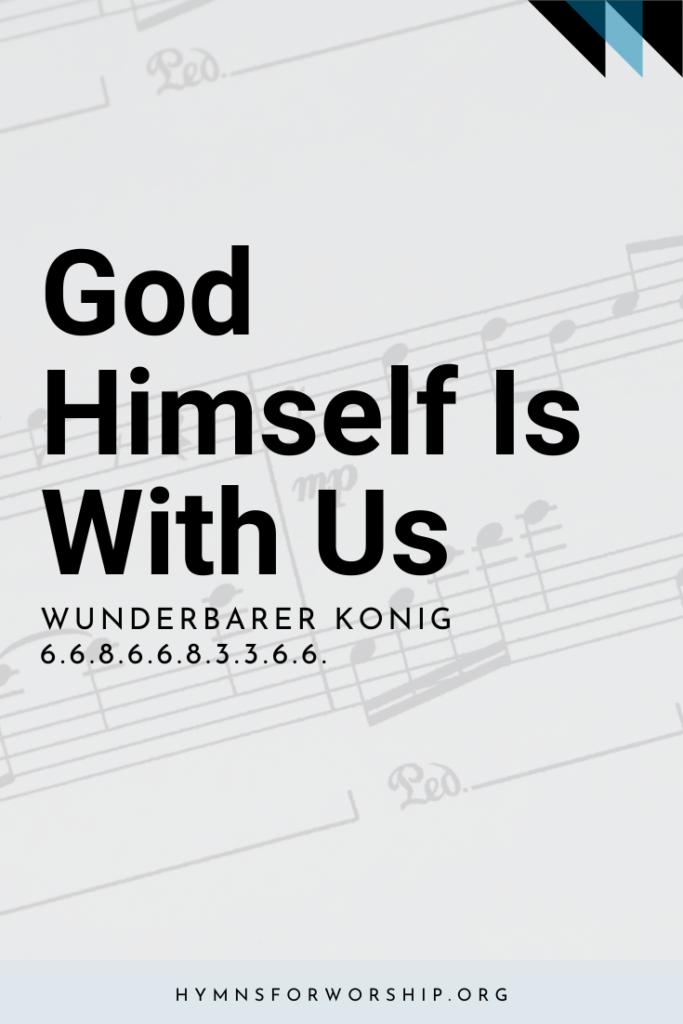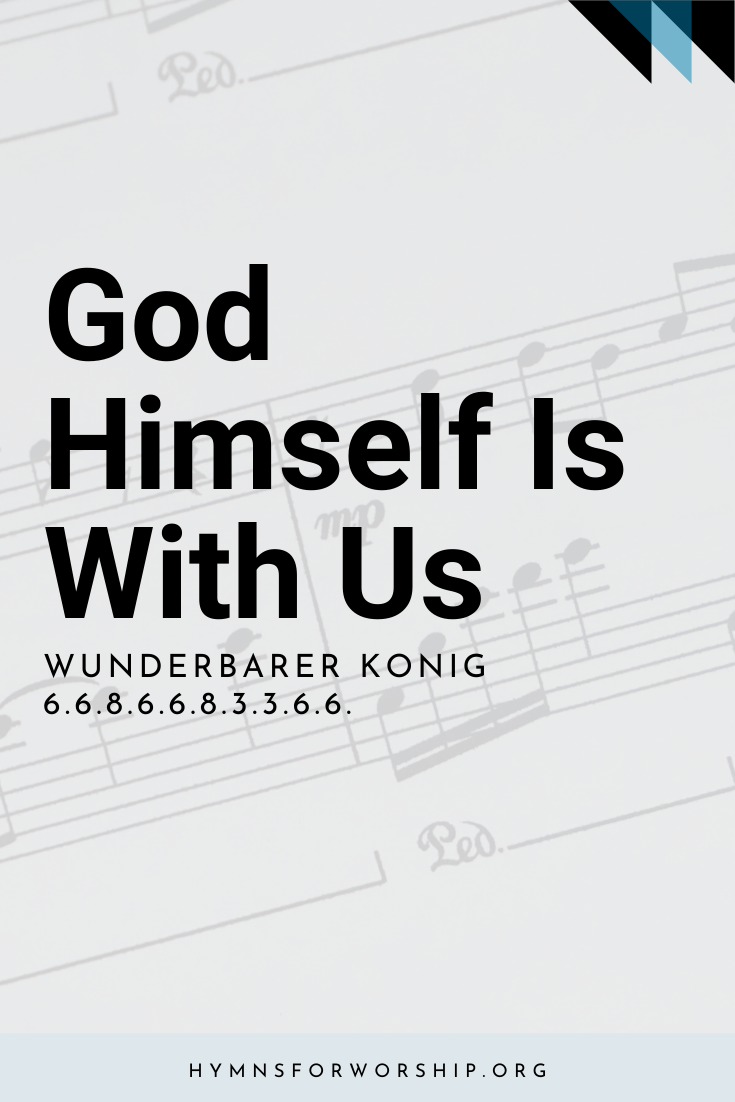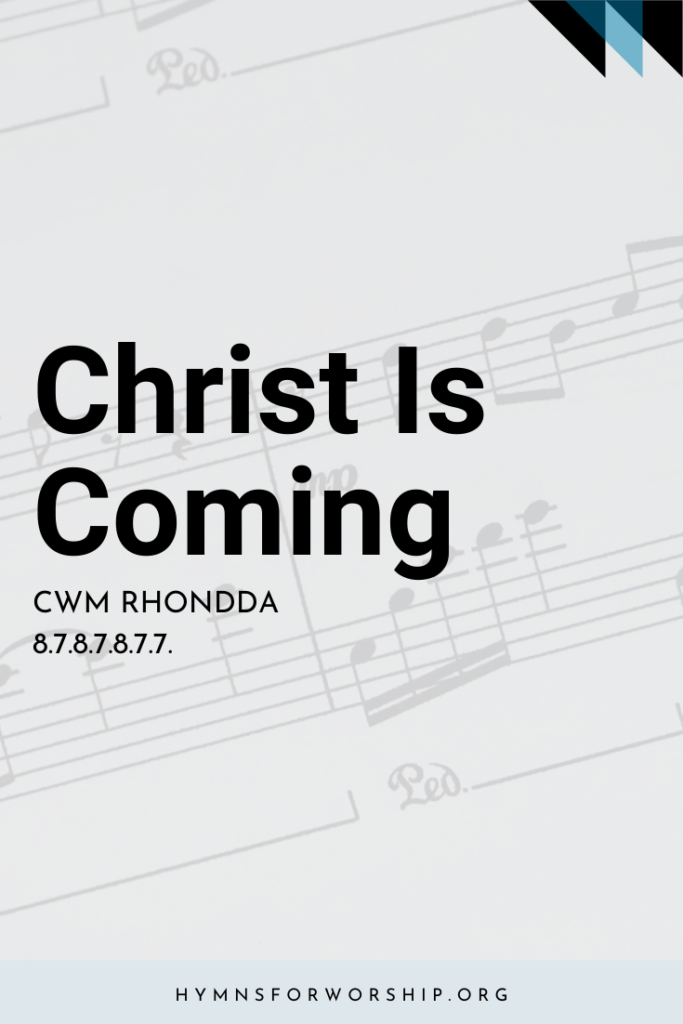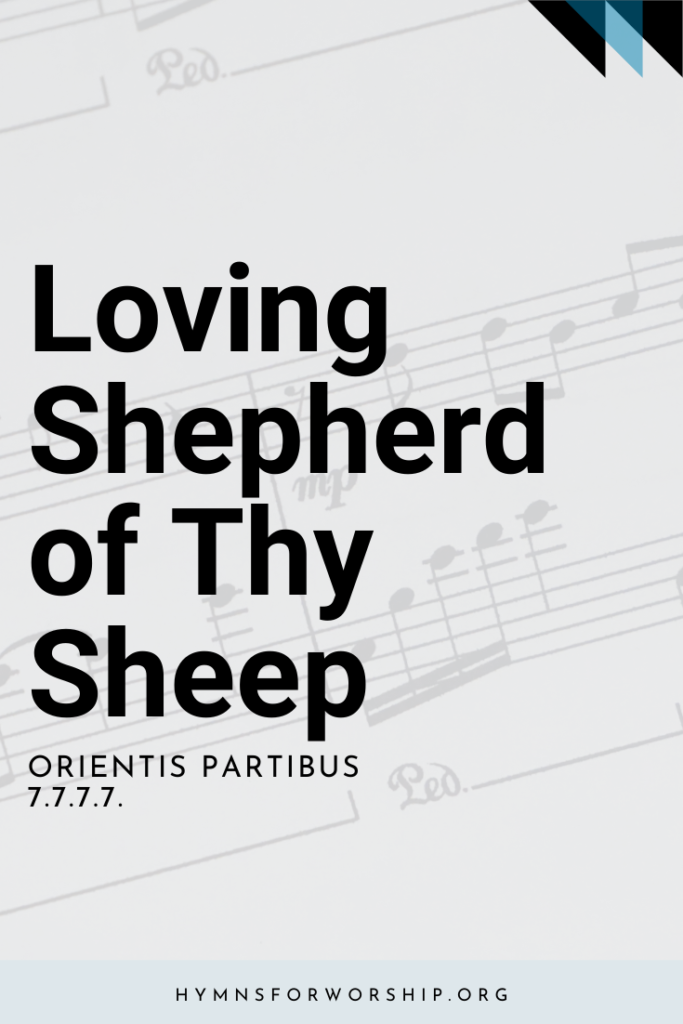WORSHIP >> ADORATION & PRAISE
SDAH 3
God Himself is with us;
Let us all adore Him,
And with awe appear before Him.


Text
1
God Himself is with us;
Let us all adore Him,
And with awe appear before Him.
God is here within us;
Soul, in silence fear Him,
Humbly, fervently draw near Him.
Now His own who have known God,
In worship lowly,
Yield their spirits wholly.
2
Come, abide within me;
Let my soul, like Mary,
Be Thine earthly sanctuary.
Come, indwelling Spirit,
With transfigured splendor;
Love and honor will I render.
Where I go here below,
Let me bow before Thee,
Know Thee and adore Thee.
3
Gladly we surrender
Earth’s deceitful treasures,
Pride of life and sinful pleasures:
Gladly, Lord, we offer
Thine to be forever,
Soul and life and each endeavor.
Thou alone shall be known
Lord of all our being,
Life’s true way decreeing.

Hymn Info
Biblical Reference
(a) Ps 33:8 (b)1 Cor 3:16 (c) 1 John 3:16; Mt 22:37
Author
Gerhard Tersteegen (1697-1769)
Translator
Hymnal 1940
Year Published
1729
Copyright
Words from ‘The Hymnal 1940,’ copyright ‘The Church Pension Fund.’
Hymn Tune
WUNDERBARER KONIG
Metrical Number
6.6.8.6.6.8.3.3.6.6.
Composer
Joachim Neander (1650-1680)
Year Composed
1680
Theme
ADORATION & PRAISE
Watch
Hymn Score
Audio Guide
Notes
Get to know the hymns a little deeper with the SDA Hymnal Companion. Use our song leader’s notes to engage your congregation in singing with understanding. Even better, involve kids in learning this hymn with our homeschooling materials.
Gerhard Tersteegen was born November 25, 1697, at Moers, near Düsseldorf, West Germany. His parents wanted him to become a minister of the Reformed Church in Germany. But his father died when Gerhard was but 6 and his mother could not afford the university course, so his education stopped with the normal classical training in the Latin school. At 16 he was apprenticed to his brother-in-law as a silk weaver in Mülheim. After five years he attempted to operate his own business and did enough ribbon-weaving to have a living and to share with the poor. After a period of severe depression, during which he ceased attending churches, he was again convinced of the saving grace of Christ and signed a covenant with God with his own blood. From then on for the rest of his life he was known as a mystic, speaker at special prayer meetings, writer on devotional subjects, and author and translator of hymns.
He acquired a group of admiring followers who subscribed sufficient money to buy a house at Mülheim called “Pilgerhütte” (Pilgrim Cottage), where the “awakened souls” could go into a spiritual retreat under the direction of Tersteegen. In addition to labors for the poor and the sick, he traveled extensively, returning each year for a visit with his followers in Holland. He also carried on a tremendous volume of correspondence. After his death on April 3, 1769, at Mülheim at age 72, his followers mostly drifted back to the Reform Church.
Of the more than 100 hymns he wrote, Julian lists 26 that were used extensively and gives this characterization of his poetry: “Inner union of the soul with God and Christ, the childlike simplicity and trust which this brings, renunciation of the world and of self, and daily endeavor to live as in the presence of God and in preparation for the vision of God, aret he keynotes of his hymns. To his intense power of realizing the unseen, his clear and simple diction, and the evident sincerity with which he sets forth his own Christian experience, his hymns owe much of their attractiveness and influence.”
This hymn, originally eight stanzas, was first published in his book Geistliches Blumen-garlein (Flower Garden of the Spirit), 1729. The translation here used was made by the committee working on the Episcopal Hymnal 1940. SDAH stanzas are Tersteegen’s 1, 8, and 3.
A literal translation of what is the second stanza in SDAH is: “Lord, some dwell in me, Let my heart and my spirit be another temple for Thee.” There is no mention of Mary, the mother of Jesus, in the original, and the Hymnal 1940 translation, which has the virtue of rhymes between four pairs of the 10 lines, evidently brings in Mary to rhyme (poorly) with sanctuary.
The tune WUNDERBARKER KÖNIG is based on a melody Joachim Neander (1650-1680; see Biographies) included in his collection of 56 hymns Alpha and Omega, Glaub- und Liebesübung, Bremen, 1680, where it is set to the hymn beginning with the same words, “Wunderbarer König” (Marvelous King).






